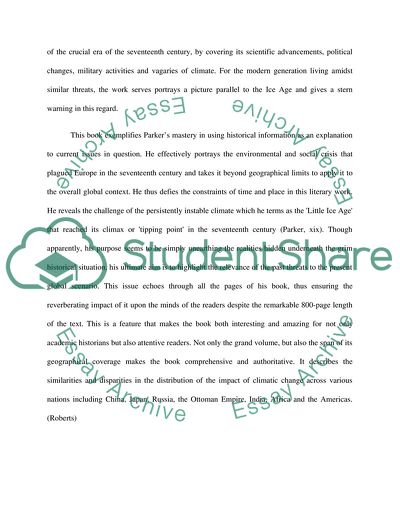Cite this document
(Geoffrey Parkers Global Crisis: War, Climate Change and Catastrophe in Book Report/Review, n.d.)
Geoffrey Parkers Global Crisis: War, Climate Change and Catastrophe in Book Report/Review. Retrieved from https://studentshare.org/history/1808224-history
Geoffrey Parkers Global Crisis: War, Climate Change and Catastrophe in Book Report/Review. Retrieved from https://studentshare.org/history/1808224-history
(Geoffrey Parkers Global Crisis: War, Climate Change and Catastrophe in Book Report/Review)
Geoffrey Parkers Global Crisis: War, Climate Change and Catastrophe in Book Report/Review. https://studentshare.org/history/1808224-history.
Geoffrey Parkers Global Crisis: War, Climate Change and Catastrophe in Book Report/Review. https://studentshare.org/history/1808224-history.
“Geoffrey Parkers Global Crisis: War, Climate Change and Catastrophe in Book Report/Review”, n.d. https://studentshare.org/history/1808224-history.


